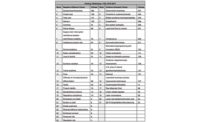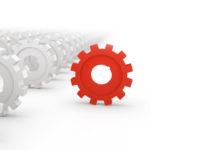Quality is the most common offshore problem cited by companies who have reshored to the U.S. As reshoring in U.S. manufacturing continues to grow, total cost of ownership (TCO) analysis remains a key, underutilized tool that companies can use to make the best sourcing decisions. While quality drives consumer preference, satisfaction and real product value, and is commonly used as a ratings factor for suppliers, it is often overlooked as a hard measure in cost analysis.
Figuring out how to put a quantitative value on quality of products from different sources is part of the process when using TCO analysis. In the Reshoring Initiative’s Total Cost of Ownership Estimator, quality cost is directly estimated via the Quality/Rework/Warranty cost factor. Companies analyzing TCO estimated their Chinese direct quality cost as about 2.5% of purchase price, making quality the 10th highest of 30 TCO cost factors. In addition to the direct quality costs, quality impacts other cost factors. Figure 1 lists the other issues experienced by companies that mention quality as one of their reasons for reshoring.
Many of these factors, e.g. lead time, delivery and loss of control represent degraded service quality associated with offshoring. Under positive domestic factors, the value of the Made in USA brand is the most commonly cited, showing that company experience is mirroring what many surveys have concluded: that consumers associate Made in USA with higher quality, and prefer Made in USA brands.
Surveys often reference Made is the USA as “perceived” quality. This is because the surveys are measuring the perception of the surveyed population, as opposed to a scientific measurement of quality in individual products. The perception that Made in USA products are of higher quality has several causes. First, U.S. companies have upped their quality game in the last 40 years and are now among the best in the world. Second, the U.S. has a strong regulatory system in place to ensure safety, and to hold accountable all claims about the product. Intellectual property laws shield U.S. products, reducing the chances that consumers buy cheap counterfeits.
Quality’s Oct. 10, 2013 article, “What Does (Cost of) Quality Mean?” presents a list of quality costs listed in the left column of Figure 2. The right column shows related TCO costs that are often increased with offshore products, and likewise can be reduced when reshoring.
When companies make sourcing decisions based solely on price, the result is typically a 20 to 30 percent miscalculation of actual offshoring costs. A tool such as the TCO Estimator can help companies quantify all relevant factors—overhead, balance sheet, risks, corporate strategy and other external and internal business considerations—in the sourcing decision. Using this information, companies can better evaluate sources, identify alternatives and even make a case when selling against offshore competitors.
TCO demonstrates that companies that accepted lower offshore quality to achieve lower purchase price may not be maximizing profitability. Chasing cheap labor offshore frequently leads to either a reduction of quality or increased effort to maintain a level of quality, generating additional unforeseen costs.
Figure 3 shows examples of the companies that mentioned quality as a reason for reshoring and brought back the most jobs. The heaviest concentration of jobs is in the top reshoring industries: transportation equipment and appliances.
Figure 4 shows the industries reporting the greatest number of cases of quality related reshoring. We included the data for the same industries in the cases where quality was not mentioned. By comparing the two sets of data we conclude that quality plays an especially large role in the reshoring of fabricated metal products.
Figure 5 shows the top countries for reshoring due to quality issues. We included the data for the same countries in the cases where quality was not mentioned. By comparing the two sets of data we conclude that quality plays an especially large role in the reshoring of products from China, a lesser role from Mexico and essentially no role from Europe.
Frequency of recalls provides another quantified measure of quality. ACETool, a U.S. Commerce Department website, shows the number of U.S. recalls based on country of origin for the U.S. and several of our major trading partners. The number of recalls in 2014 ranged from four for goods from Canada to 47 from the U.S. to 153 from China. The Chinese total climbed from 58 in 2002 to a peak of 300 in 2007 and then smoothly declined. Since each country’s share of goods has changed over the years, it is helpful to adjust for volume. Recalled goods for every $100 of goods sold in the U.S. in 2014 were $0.64 for Chinese goods, about six times the rate of $0.11 for U.S. goods.
Ideally a company will seek to produce the highest quality goods by the most cost effective means. In many cases, that will mean the product should be made in the U.S. It is conservatively estimated that about 25% of what is offshore would come back if companies would use TCO instead of price as a sourcing criterion. This number would be even greater if the U.S. would focus on eliminating the trade deficit by creating an environment in which U.S. companies would at least be competitive in their home market. In addition to the economic benefits from eliminating the trade deficit, U.S. consumers would, on average, receive higher quality, safer products. A dramatically increased rate of reshoring will require a much larger and better trained skilled workforce and more automation. Both will further improve quality.
We encourage OEMs and suppliers to send us their stories of reshoring, especially where quality played a role. If we get enough we will summarize them in another article for Quality. You can reach us at [email protected].
About the data: The reshored manufacturing cases analyzed for this article include the 132 companies listed in our reshoring database that cited quality as a negative offshore factor. More data is available through advanced search in the reshoring library. Use our TCOE and other free tools at reshorenow.org.








